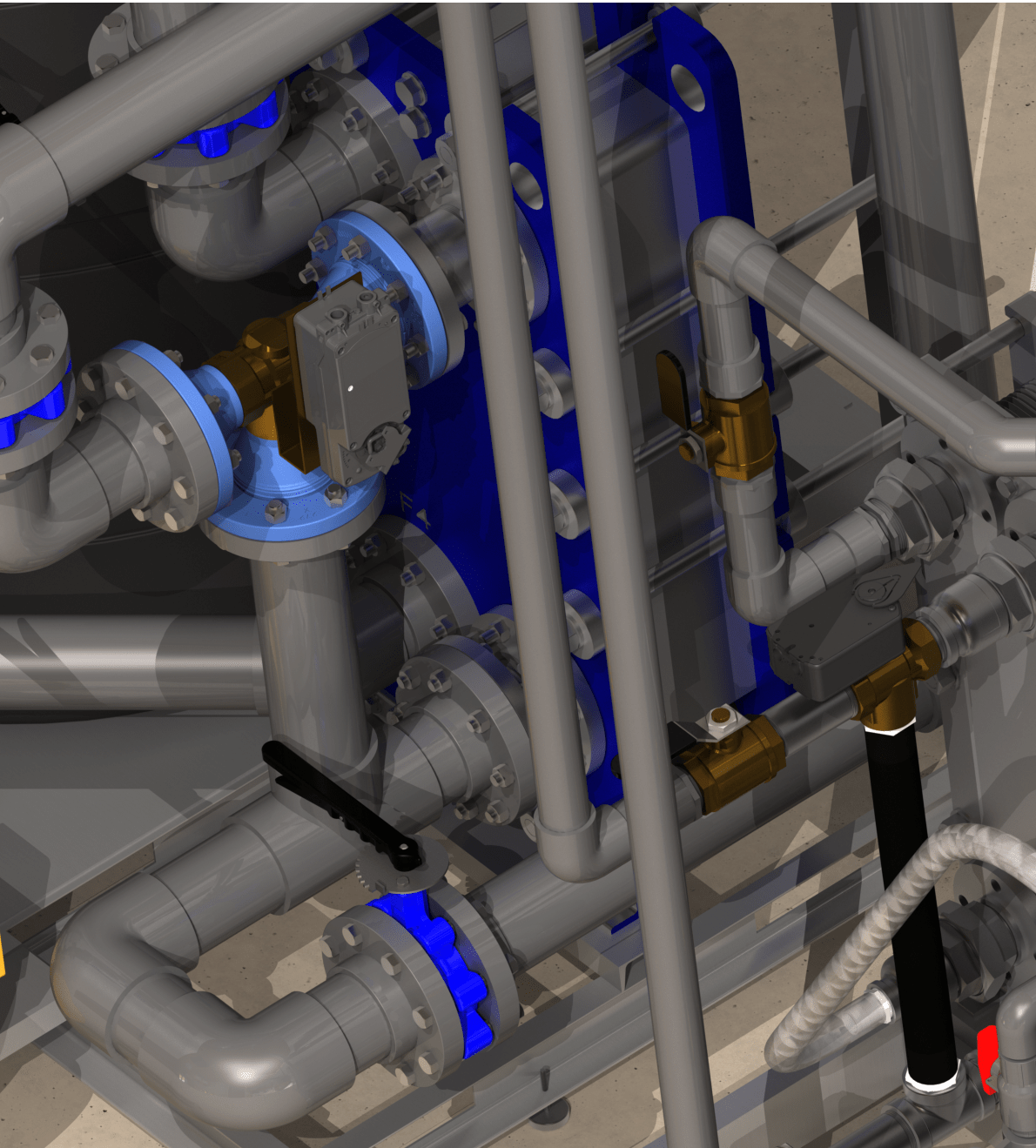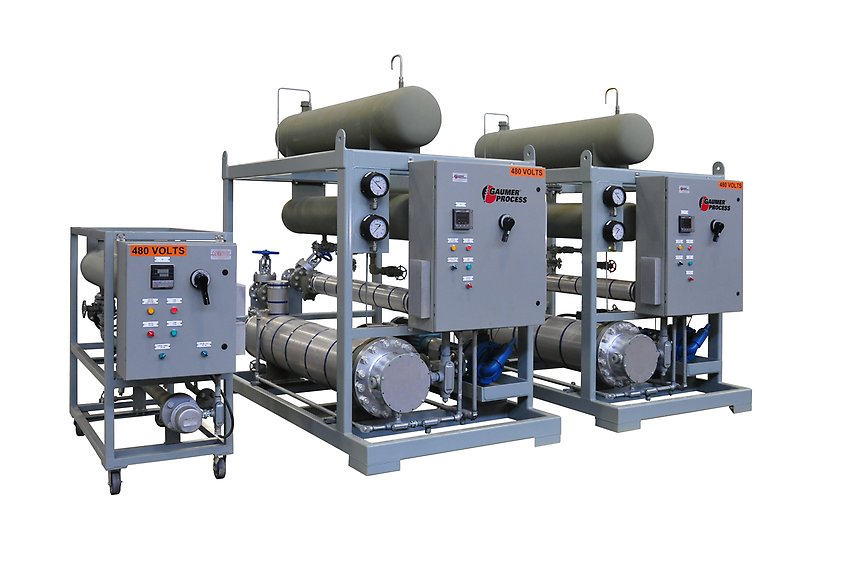A Comprehensive Overview to Choosing the Right Heat Transfer Equipments for Your Needs
Selecting the suitable Heat transfer system is essential for operational performance. Various systems satisfy different requirements, influenced by elements such as temperature variety and fluid kind. Understanding the concepts behind Heat transfer, such as radiation, conduction, and convection, is crucial. Furthermore, examining energy resources and maintenance methods can impact lasting efficiency. A closer assessment of these considerations reveals how to customize a system to specific requirements. What should one prioritize in this complicated decision-making process?
Understanding Heat Transfer: Secret Principles and Principles
Heat transfer may seem like a simple idea, it encompasses an array of concepts that are basic for effective system layout - DVS Heat Transfer Systems. Comprehending these principles is necessary for engineers and designers who intend to maximize thermal efficiency in various applications. Conduction, as an example, entails the transfer of Heat via solid products, while convection refers to the motion of Heat within liquids. Radiation, another vital principle, explains just how Heat can be transferred with electro-magnetic waves. Each of these systems plays an important function in identifying exactly how power moves within a system. By completely realizing these principles, experts can make enlightened decisions, making sure that Heat transfer systems operate efficiently and fulfill the particular needs of their applications
Kinds Of Heat Transfer Equipments: A Review
Recognizing the concepts of Heat transfer prepares for exploring the numerous sorts of Heat transfer systems available. Heat transfer systems can be categorized largely into 3 types: radiation, transmission, and convection. Transmission includes Heat transfer with solid materials, counting on direct contact in between particles. Convection, on the other hand, occurs in liquids (liquids and gases) where the movement of the fluid itself facilitates Heat transfer. Radiation includes the transfer of Heat through electro-magnetic waves and does not require a medium, enabling it to occur in a vacuum. Each kind of system has distinct qualities and applications, making it vital for people and organizations to thoroughly assess their details demands when picking one of the most appropriate Heat transfer option.
Applications of Heat Transfer Systems in Various Industries
Heat transfer systems play an essential function across different sectors, impacting effectiveness and product top quality. In commercial production processes, they help with exact temperature control, while in food and beverage processing, they assure safety and preservation. Furthermore, a/c and climate control systems rely heavily on reliable Heat transfer to preserve comfortable atmospheres.
Industrial Production Processes

Numerous commercial manufacturing processes count heavily on efficient Heat transfer systems to take full advantage of performance and improve product high quality. In fields such as metalworking, Heat exchangers play an essential role in maintaining perfect temperature levels during welding, casting, and creating. These systems ensure consistent Heat circulation, which is important for attaining preferred material buildings. In the chemical production industry, Heat transfer systems help with exact temperature control throughout reactions, affecting return and security. Moreover, in textile manufacturing, effective Heat monitoring is important for dyeing and ending up procedures, affecting shade uniformity and fabric high quality. By picking appropriate Heat transfer technologies, makers can improve energy performance and minimize functional expenses, ultimately causing a much more affordable and sustainable production atmosphere.
Food and Drink Processing
Reliable Heat transfer systems are just as important in the food and beverage handling market, where preserving suitable temperatures is crucial for food safety and quality. These systems play a vital role in procedures such as sanitation, pasteurization, and food preparation, guaranteeing that items are secure for consumption and maintain their dietary worth. Heat exchangers, for circumstances, efficiently transfer Heat between liquids, optimizing power usage while reducing temperature level variations. Furthermore, refrigeration systems are essential for maintaining disposable things and extending service life. The selection of Heat transfer modern technology straight impacts operational performance and product integrity, making it necessary for food and drink makers to select the proper systems tailored to their particular handling demands. This cautious choice inevitably adds to customer complete satisfaction and food security.

Heating And Cooling and Climate Control
While many sectors depend on Heat transfer systems for performance, HEATING AND COOLING (Home Heating, Ventilation, and A/c) plays a crucial function in preserving indoor click over here climate control across numerous settings. These systems use Heat transfer concepts to control air, temperature, and moisture high quality, making certain convenience and safety and security in property, industrial, and industrial environments. Appropriately created a/c systems enhance energy efficiency, minimize operational prices, and decrease environmental influence. In commercial buildings, for instance, reliable climate control adds to staff member productivity and client satisfaction. In industrial applications, a/c systems assist preserve suitable conditions for equipment procedure and product preservation. Picking the right Heat transfer system is important for conference certain climate control needs and attaining total system performance.
Reviewing Power Resources for Heat Transfer Solutions
In reviewing energy sources for Heat transfer systems, a comparison of renewable power choices and fossil fuel factors to consider is essential. Eco-friendly sources, such as solar and wind, deal sustainable choices that can minimize environmental effect. On the other hand, fossil gas stay widespread because of their recognized infrastructure and power thickness, prompting a cautious assessment of both alternatives.
Renewable Resource Options

Nonrenewable Fuel Source Considerations
Assessing fossil fuel factors to consider is necessary for the effectiveness and sustainability of Heat transfer systems. Nonrenewable fuel sources, such as all-natural gas, oil, and coal, are traditional power sources that offer significant Heat result, making them preferred choices for commercial and household applications. Their environmental impact, including greenhouse gas emissions and resource depletion, elevates issues. When choosing a warm transfer system, it is important to evaluate the schedule, price, and regulatory elements related to these gas. In addition, the performance of nonrenewable fuel source systems should be taken into consideration, as higher effectiveness can reduce some ecological drawbacks. Ultimately, a balanced method weighing efficiency and sustainability can guide decision-makers toward the most ideal Heat transfer service for their details needs.
Aspects to Think About When Picking a Warm Transfer System
Selecting an appropriate Heat transfer system calls for careful factor to consider of numerous aspects that can considerably affect efficiency and efficiency. One crucial aspect is the operating temperature range, which determines the materials and layout suitable for the application. Furthermore, the sort of liquid made use of in the system-- whether gas or liquid-- influences Heat transfer efficiency and compatibility. The system's size and ability have to straighten with the certain needs of the procedure to avoid inadequacies. Energy resource accessibility is likewise necessary, influencing operating expense and sustainability. The installation atmosphere, consisting of room restraints and accessibility for upkeep, plays a substantial duty in system option. Governing compliance and security criteria should be considered to assure the system meets all lawful requirements.
Upkeep and Efficiency Optimization for Heat Transfer Equipments
Maintaining Heat transfer systems is important for making sure optimal effectiveness and durability. Routine maintenance activities, such as cleaning up Heat exchangers and evaluating insulation, aid protect against performance losses as a result of fouling and thermal connecting. Furthermore, monitoring system specifications, consisting of stress and temperature, permits early detection of anomalies, decreasing downtime and pricey repairs. Applying a preventative upkeep timetable can maximize performance and prolong the lifespan of elements. In addition, upgrading to innovative control systems can improve operational efficiency by adjusting to varying tons and problems. By prioritizing maintenance and efficiency optimization, drivers can accomplish minimized power usage, lower operational prices, and improved total system dependability, eventually leading to far better source use and a more sustainable procedure.
Future Patterns in Heat Transfer Technologies
As markets significantly prioritize sustainability and power performance, future trends in Heat transfer technologies are set to go through considerable transformations. Advancements such as sophisticated products, including carbon nanotubes and nanofluids, assure boosted thermal conductivity and effectiveness. Additionally, the assimilation of renewable resource sources into Heat transfer systems is getting energy, promoting green options. Smart technologies, consisting of IoT sensors, this website are expected to change tracking and control, enabling real-time data evaluation for enhanced efficiency. The growth of modular and compact systems will promote simpler installment and maintenance, providing to diverse applications. These innovations indicate a shift in the direction of more lasting, efficient, and versatile Heat transfer remedies, lining up with global power objectives and ecological requirements.
Regularly Asked Inquiries
What Are the Environmental Impacts of Heat Transfer Systems?
The environmental influences of Heat transfer systems can include greenhouse gas discharges, energy consumption, and potential thermal contamination. Additionally, improper disposal of ineffectiveness and materials can add to resource exhaustion and community disruption.
Just how Do I Determine the Cost-Effectiveness of a Warm Transfer System?
To determine the cost-effectiveness of a warmth transfer system, one must analyze review preliminary costs, operational expenditures, maintenance needs, and power performance, comparing these elements versus the expected life expectancy and performance of the system.
Can Heat Transfer Solution Be Made Use Of in Residential Setups?
Heat transfer systems can indeed be utilized in property setups. They offer effective heating and cooling solutions, making homes a lot more comfy while possibly lowering power costs. Their adaptability permits different applications in household settings.
What Safety Regulations Put On Heat Transfer Solutions?
Security policies for Heat transfer systems normally consist of guidelines on installation, maintenance, and operation. Conformity with neighborhood building codes, manufacturer requirements, and market requirements is necessary to assure safe and efficient system performance in different applications.
Exactly How Do Various Materials Affect Heat Transfer Performance?

Transmission, for instance, includes the transfer of Heat with solid materials, while convection refers to the movement of Heat within liquids. Understanding the concepts of Heat transfer lays the groundwork for exploring the numerous types of Heat transfer systems readily available. Heat exchangers, for instance, successfully move Heat between liquids, optimizing energy usage while decreasing temperature level variations. In assessing energy sources for Heat transfer systems, a comparison of sustainable power choices and fossil gas considerations is vital. Metals, such as copper and light weight aluminum, conduct Heat effectively, whereas insulators like rubber and glass reduce down Heat flow.